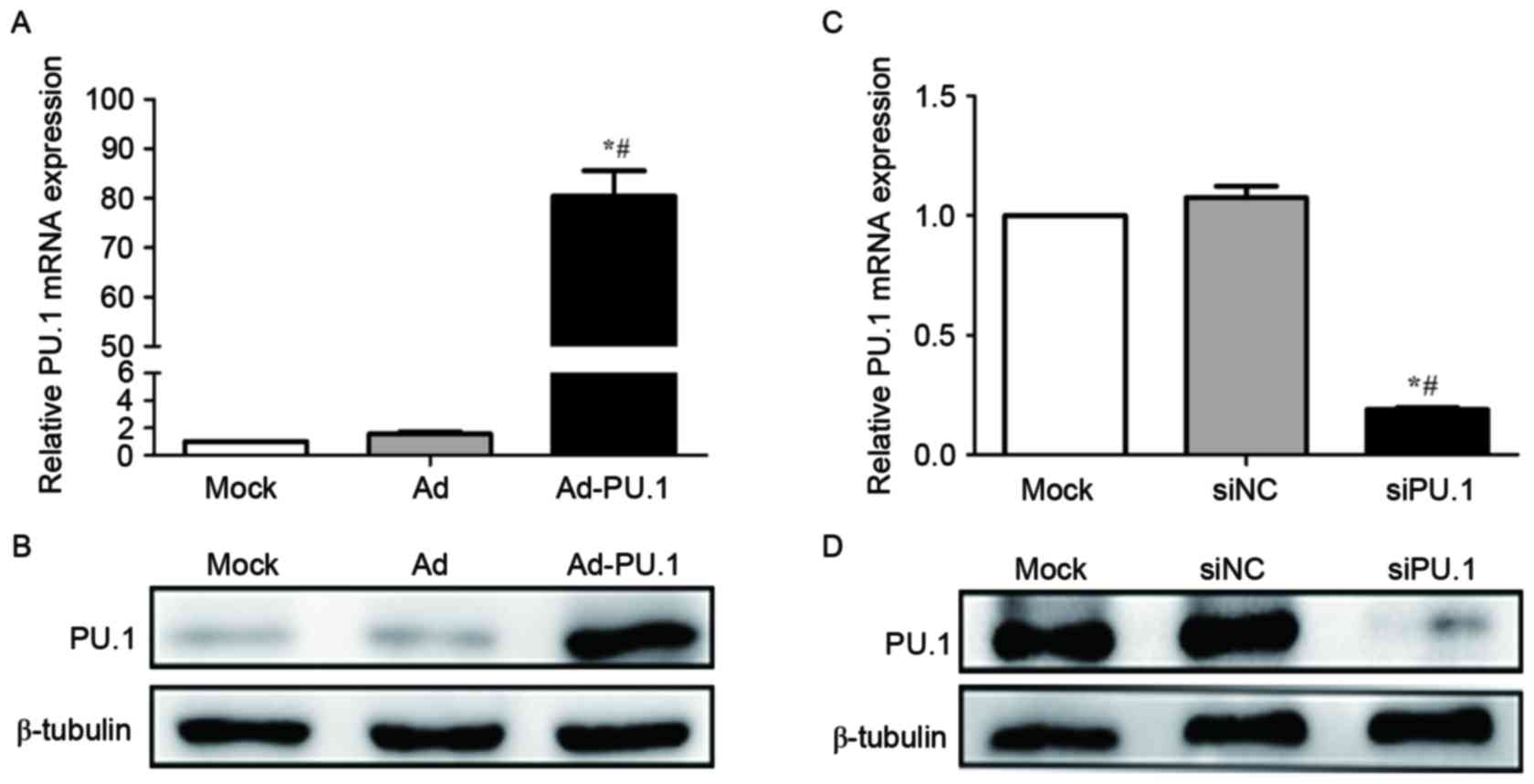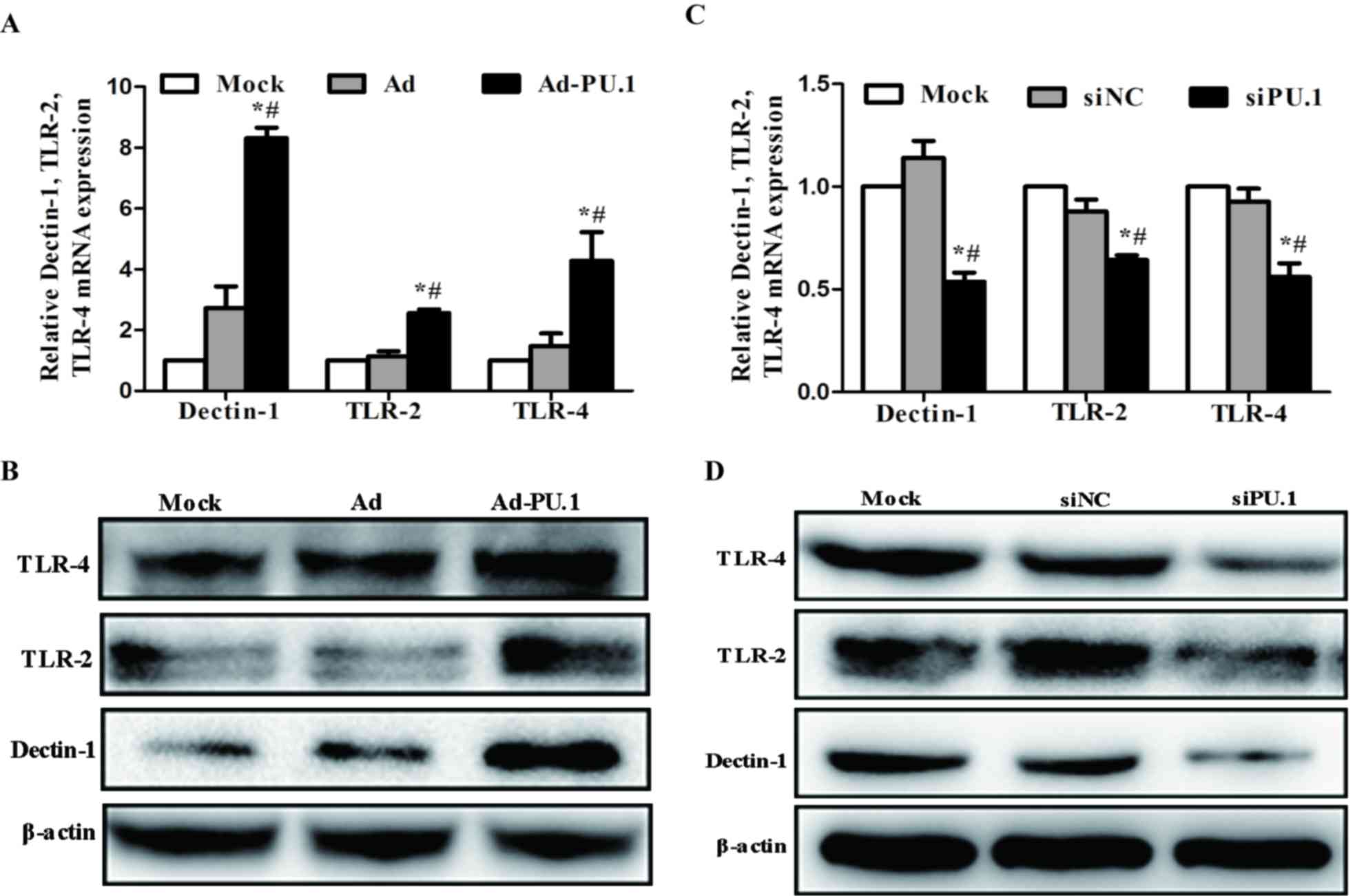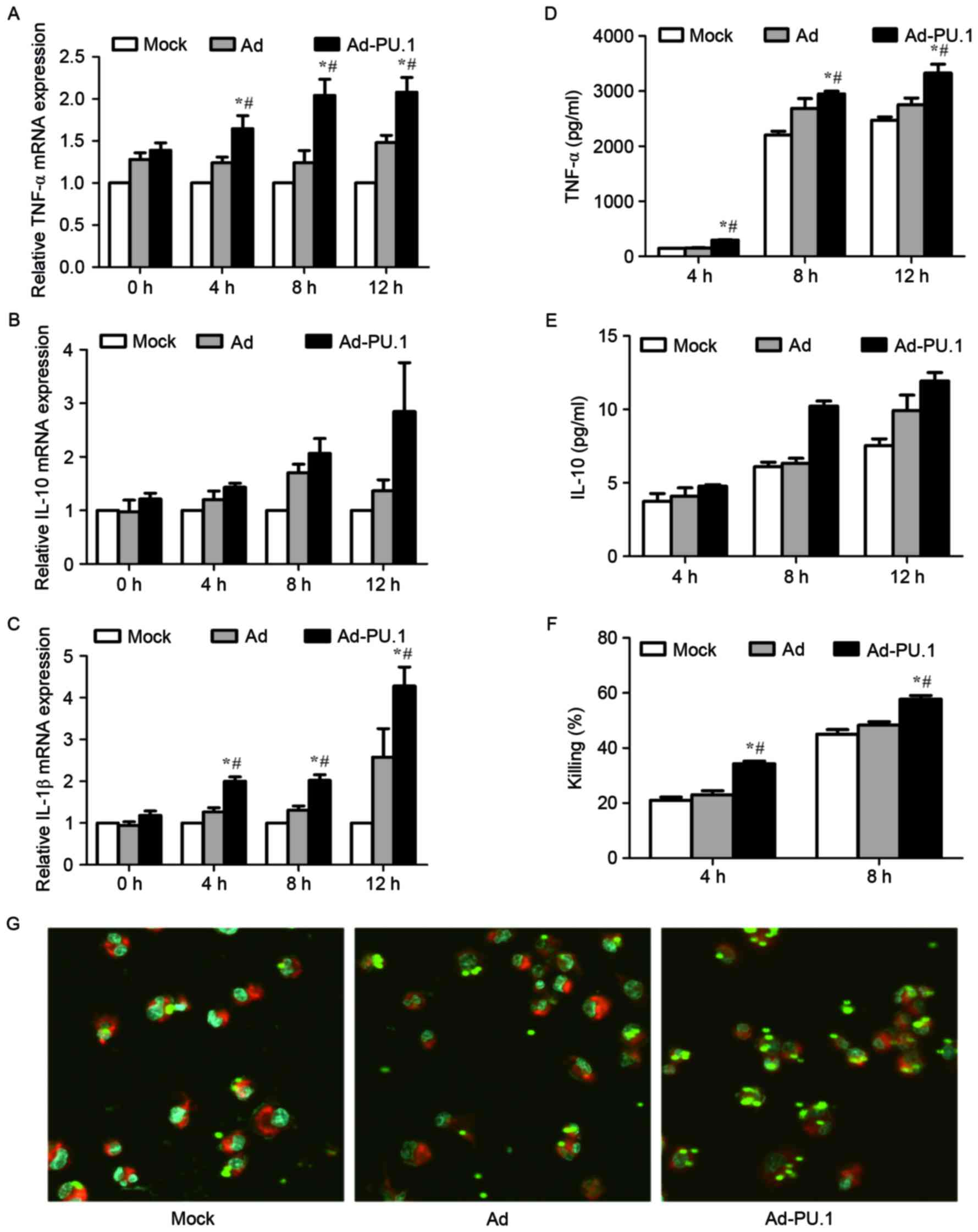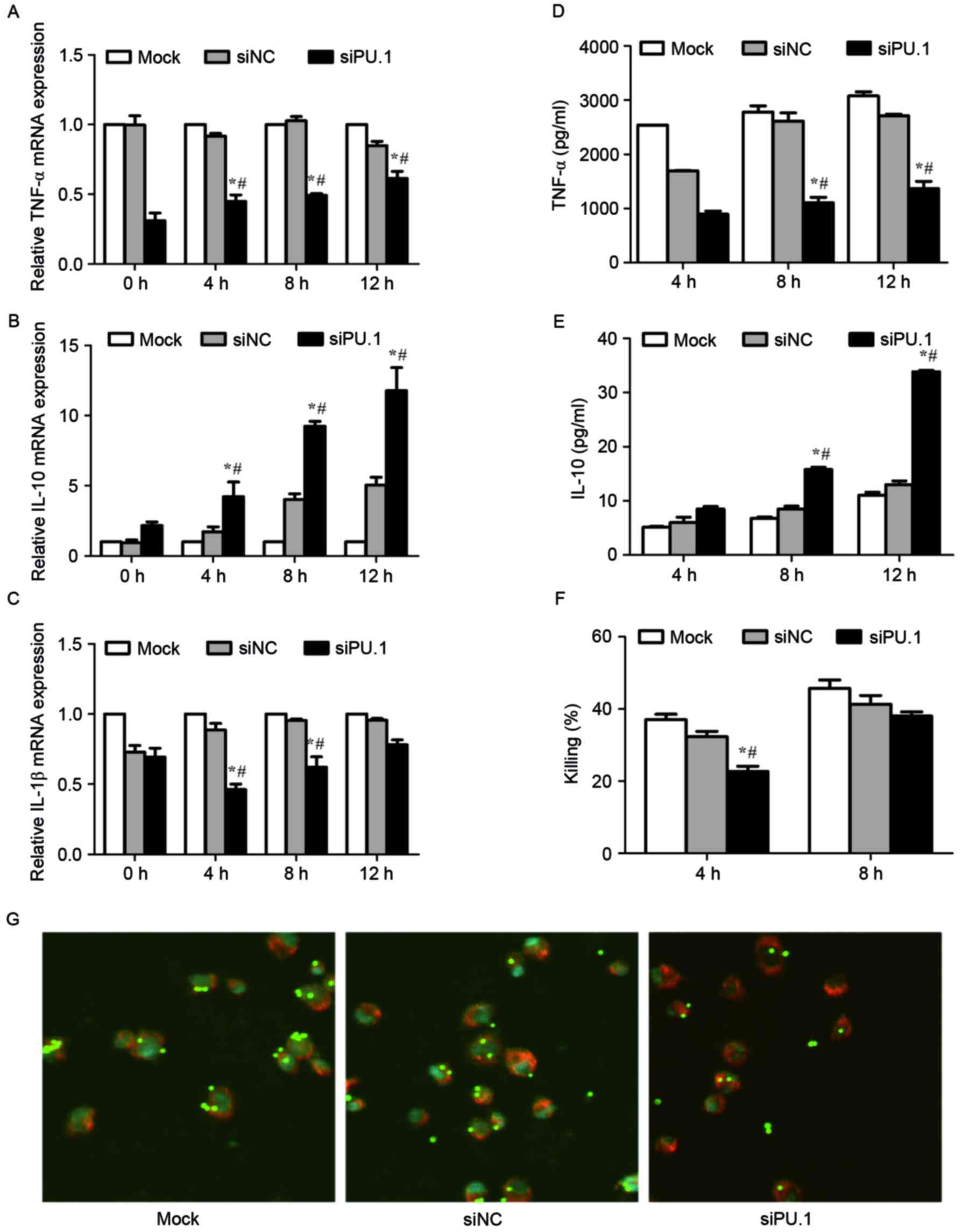|
1
|
Sugui JA, Kwon-Chung KJ, Juvvadi PR, Latge
JP and Steinbach WJ: Aspergillus fumigatus and Related Species.
Cold Spring Harb Perspect Med. 5:a197862015. View Article : Google Scholar
|
|
2
|
Cramer RA, Rivera A and Hohl TM: Immune
responses against Aspergillus fumigatus: What have we learned? Curr
Opin Infect Dis. 24:315–322. 2011. View Article : Google Scholar :
|
|
3
|
Xia D, Sun WK, Tan MM, Ding Y, Liu ZC, Li
P, Qian Q, Su X and Shi Y: An adenoviral vector encoding
full-length dectin-1 promotes aspergillus-induced innate immune
response in macrophages. Lung. 193:549–557. 2015. View Article : Google Scholar
|
|
4
|
Margalit A and Kavanagh K: The innate
immune response to Aspergillus fumigatus at the alveolar surface.
Fems Microbiol Rev. 39:670–687. 2015. View Article : Google Scholar
|
|
5
|
Werner JL, Metz AE, Horn D, Schoeb TR,
Hewitt MM, Schwiebert LM, Faro-Trindade I, Brown GD and Steele C:
Requisite role for the dectin-1 beta-glucan receptor in pulmonary
defense against Aspergillus fumigatus. J Immunol. 182:4938–4946.
2009. View Article : Google Scholar :
|
|
6
|
Cunha C, Di Ianni M, Bozza S, Giovannini
G, Zagarella S, Zelante T, D'Angelo C, Pierini A, Pitzurra L,
Falzetti F, et al: Dectin-1 Y238X polymorphism associates with
susceptibility to invasive aspergillosis in hematopoietic
transplantation through impairment of both recipient- and
donor-dependent mechanisms of antifungal immunity. Blood.
116:5394–5402. 2010. View Article : Google Scholar
|
|
7
|
Hohl TM and Feldmesser M: Aspergillus
fumigatus: Principles of pathogenesis and host defense. Eukaryot
Cell. 6:1953–1963. 2007. View Article : Google Scholar :
|
|
8
|
Mehrad B, Strieter RM and Standiford TJ:
Role of TNF-alpha in pulmonary host defense in murine invasive
aspergillosis. J Immunol. 162:1633–1640. 1999.
|
|
9
|
Meier A, Kirschning CJ, Nikolaus T, Wagner
H, Heesemann J and Ebel F: Toll-like receptor (TLR) 2 and TLR4 are
essential for aspergillus-induced activation of murine macrophages.
Cell Microbiol. 5:561–570. 2003. View Article : Google Scholar
|
|
10
|
Bellocchio S, Montagnoli C, Bozza S,
Gaziano R, Rossi G, Mambula SS, Vecchi A, Mantovani A, Levitz SM
and Romani L: The contribution of the toll-like/IL-1 Receptor
superfamily to innate and adaptive immunity to fungal pathogens in
vivo. J Immunol. 172:3059–3069. 2004. View Article : Google Scholar
|
|
11
|
Bochud PY, Chien JW, Marr KA, Leisenring
WM, Upton A, Janer M, Rodrigues SD, Li S, Hansen JA, Zhao LP, et
al: Toll-like receptor 4 polymorphisms and aspergillosis in
stem-cell transplantation. N Engl J Med. 359:1766–1777. 2008.
View Article : Google Scholar :
|
|
12
|
Ghisletti S, Barozzi I, Mietton F,
Polletti S, De Santa F, Venturini E, Gregory L, Lonie L, Chew A,
Wei CL, et al: Identification and characterization of enhancers
controlling the inflammatory gene expression program in
macrophages. Immunity. 32:317–328. 2010. View Article : Google Scholar
|
|
13
|
Serezani CH, Kane S, Collins L,
Morato-Marques M, Osterholzer JJ and Peters-Golden M: Macrophage
dectin-1 expression is controlled by leukotriene B4 Via a
GM-CSF/PU.1 axis. J Immunol. 189:906–915. 2012. View Article : Google Scholar :
|
|
14
|
Zhang C, Wang SH, Liao CP, Shao S, Lasbury
ME, Durant PJ and Lee CH: Downregulation of PU.1 leads to decreased
expression of dectin-1 in alveolar macrophages during pneumocystis
pneumonia. Infect Immun. 78:1058–1065. 2010. View Article : Google Scholar :
|
|
15
|
Shibata Y, Berclaz PY, Chroneos ZC,
Yoshida M, Whitsett JA and Trapnell BC: GM-CSF regulates alveolar
macrophage differentiation and innate immunity in the lung through
PU.1. Immunity. 15:557–567. 2001. View Article : Google Scholar
|
|
16
|
Haehnel V, Schwarzfischer L, Fenton MJ and
Rehli M: Transcriptional regulation of the human toll-like receptor
2 gene in monocytes and macrophages. J Immunol. 168:5629–5637.
2002. View Article : Google Scholar
|
|
17
|
Park SY, Lee SW, Baek SH, Lee CW, Lee WS,
Rhim BY, Hong KW and Kim CD: Suppression of PU.1-linked TLR4
expression by cilostazol with decrease of cytokine production in
macrophages from patients with rheumatoid arthritis. Br J
Pharmacol. 168:1401–1411. 2013. View Article : Google Scholar :
|
|
18
|
Moon HG, Yang J, Zheng Y and Jin Y:
MiR-15a/16 regulates macrophage phagocytosis after bacterial
infection. J Immunol. 193:4558–4567. 2014. View Article : Google Scholar :
|
|
19
|
Persat F, Noirey N, Diana J, Gariazzo MJ,
Schmitt D, Picot S and Vincent C: Binding of live conidia of
Aspergillus fumigatus activates in vitro-generated human langerhans
cells via a lectin of galactomannan specificity. Clin Exp Immunol.
133:370–377. 2003. View Article : Google Scholar :
|
|
20
|
Sun WK, Lu X, Li X, Sun QY, Su X, Song Y,
Sun HM and Shi Y: Dectin-1 is inducible and plays a crucial role in
Aspergillus-induced innate immune responses in human bronchial
epithelial cells. Eur J Clin Microbiol Infect Dis. 31:2755–2764.
2012. View Article : Google Scholar
|
|
21
|
Livak KJ and Schmittgen TD: Analysis of
relative gene expression data using real-time quantitative PCR and
the 2(−Delta Delta C(T)) method. Methods. 25:402–408. 2001.
View Article : Google Scholar
|
|
22
|
Sun H, Xu XY, Tian XL, Shao HT, Wu XD,
Wang Q, Su X and Shi Y: Activation of NF-κB and respiratory burst
following Aspergillus fumigatus stimulation of macrophages.
Immunobiology. 219:25–36. 2014. View Article : Google Scholar
|
|
23
|
Heinekamp T, Schmidt H, Lapp K, Pähtz V,
Shopova I, Köster-Eiserfunke N, Krüger T, Kniemeyer O and Brakhage
AA: Interference of Aspergillus fumigatus with the immune response.
Semin Immunopathol. 37:141–152. 2015. View Article : Google Scholar
|
|
24
|
Ibrahim-Granet O, Philippe B, Boleti H,
Boisvieux-Ulrich E, Grenet D, Stern M and Latgé JP: Phagocytosis
and intracellular fate of Aspergillus fumigatus conidia in alveolar
macrophages. Infect Immun. 71:891–903. 2003. View Article : Google Scholar :
|
|
25
|
Dagenais TR and Keller NP: Pathogenesis of
Aspergillus fumigatus in invasive aspergillosis. Clin Microbiol
Rev. 22:447–465. 2009. View Article : Google Scholar :
|
|
26
|
Turkistany SA and DeKoter RP: The
transcription factor PU.1 is a critical regulator of cellular
communication in the immune system. Arch Immunol Ther Exp (Warsz).
59:431–440. 2011. View Article : Google Scholar
|
|
27
|
Nakata K, Kanazawa H and Watanabe M: Why
does the autoantibody against granulocyte-macrophage
colony-stimulating factor cause lesions only in the lung?
Respirology. 11(Suppl): S65–S69. 2006. View Article : Google Scholar
|
|
28
|
Trapnell BC and Whitsett JA: Gm-CSF
regulates pulmonary surfactant homeostasis and alveolar
macrophage-mediated innate host defense. Annu Rev Physiol.
64:775–802. 2002. View Article : Google Scholar
|
|
29
|
Kanada S, Nishiyama C, Nakano N, Suzuki R,
Maeda K, Hara M, Kitamura N, Ogawa H and Okumura K: Critical role
of transcription factor PU.1 in the expression of CD80 and CD86 on
dendritic cells. Blood. 117:2211–2222. 2011. View Article : Google Scholar
|
|
30
|
Becker KL, Ifrim DC, Quintin J, Netea MG
and van de Veerdonk FL: Antifungal innate immunity: Recognition and
inflammatory networks. Semin Immunopathol. 37:107–116. 2015.
View Article : Google Scholar
|
|
31
|
Bonfim CV, Mamoni RL and Blotta MH: TLR-2,
TLR-4 and Dectin-1 expression in human monocytes and neutrophils
stimulated by paracoccidioides brasiliensis. Med Mycol. 47:722–733.
2009. View Article : Google Scholar
|
|
32
|
Braedel S, Radsak M, Einsele H, Latgé JP,
Michan A, Loeffler J, Haddad Z, Grigoleit U, Schild H and Hebart H:
Aspergillus fumigatus antigens activate innate immune cells via
toll-like receptors 2 and 4. Br J Haematol. 125:392–399. 2004.
View Article : Google Scholar
|
|
33
|
Mambula SS, Sau K, Henneke P, Golenbock DT
and Levitz SM: Toll-like receptor (TLR) signaling in response to
Aspergillus fumigatus. J Biol Chem. 277:39320–39326. 2002.
View Article : Google Scholar
|
|
34
|
Meier A, Kirschning CJ, Nikolaus T, Wagner
H, Heesemann J and Ebel F: Toll-like receptor (TLR) 2 and TLR4 are
essential for Aspergillus-induced activation of murine macrophages.
Cell Microbiol. 5:561–570. 2003. View Article : Google Scholar
|
|
35
|
Marr KA, Balajee SA, Hawn TR, Ozinsky A,
Pham U, Akira S, Aderem A and Liles WC: Differential role of MyD88
in macrophage-mediated responses to opportunistic fungal pathogens.
Infect Immun. 71:5280–5286. 2003. View Article : Google Scholar :
|
|
36
|
Philippe B, Ibrahim-Granet O, Prévost MC,
Gougerot-Pocidalo MA, Sanchez PM, Van der Meeren A and Latgé JP:
Killing of Aspergillus fumigatus by alveolar macrophages is
mediated by reactive oxidant intermediates. Infect Immun.
71:3034–3042. 2003. View Article : Google Scholar :
|
|
37
|
Zhang G, Zhou B, Li S, Yue J, Yang H, Wen
Y, Zhan S, Wang W, Liao M, Zhang M, et al: Allele-specific
induction of IL-1β expression by C/EBPβ and PU.1 contributes to
increased tuberculosis susceptibility. Plos Pathog.
10:e10044262014. View Article : Google Scholar :
|
|
38
|
Lin JH, Lin JY, Chou YC, Chen MR, Yeh TH,
Lin CW, Lin SJ and Tsai CH: Epstein-barr virus LMP2A suppresses MHC
class II expression by regulating the b-cell transcription factors
E47 and PU.1. Blood. 125:2228–2238. 2015. View Article : Google Scholar
|
|
39
|
Lin M and Rikihisa Y: Ehrlichia
chaffeensis downregulates surface toll-like receptors 2/4, CD14 and
transcription factors PU.1 and inhibits lipopolysaccharide
activation of NF-kappa BERK 1/2 and P38 MAPK in host monocytes.
Cell Microbiol. 6:175–186. 2004. View Article : Google Scholar
|
|
40
|
Karpurapu M, Wang X, Deng J, Park H, Xiao
L, Sadikot RT, Frey RS, Maus UA, Park GY, Scott EW and Christman
JW: Functional PU.1 in macrophages has a pivotal role in NF-κB
activation and neutrophilic lung inflammation during endotoxemia.
Blood. 118:5255–5266. 2011. View Article : Google Scholar :
|


















